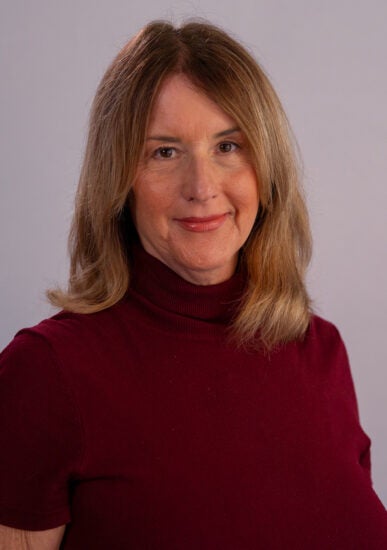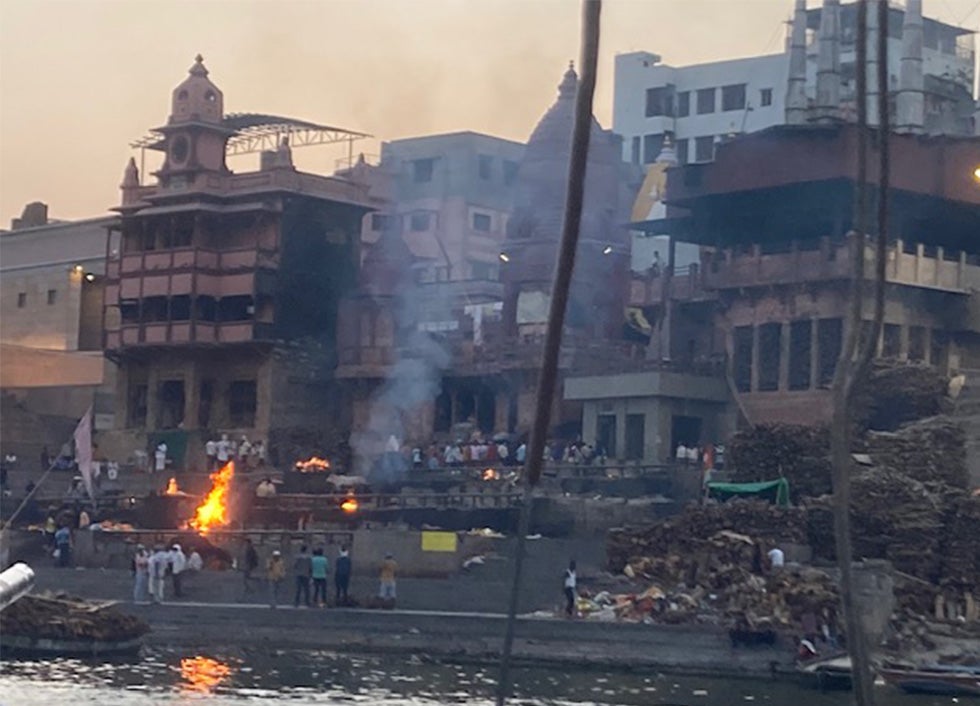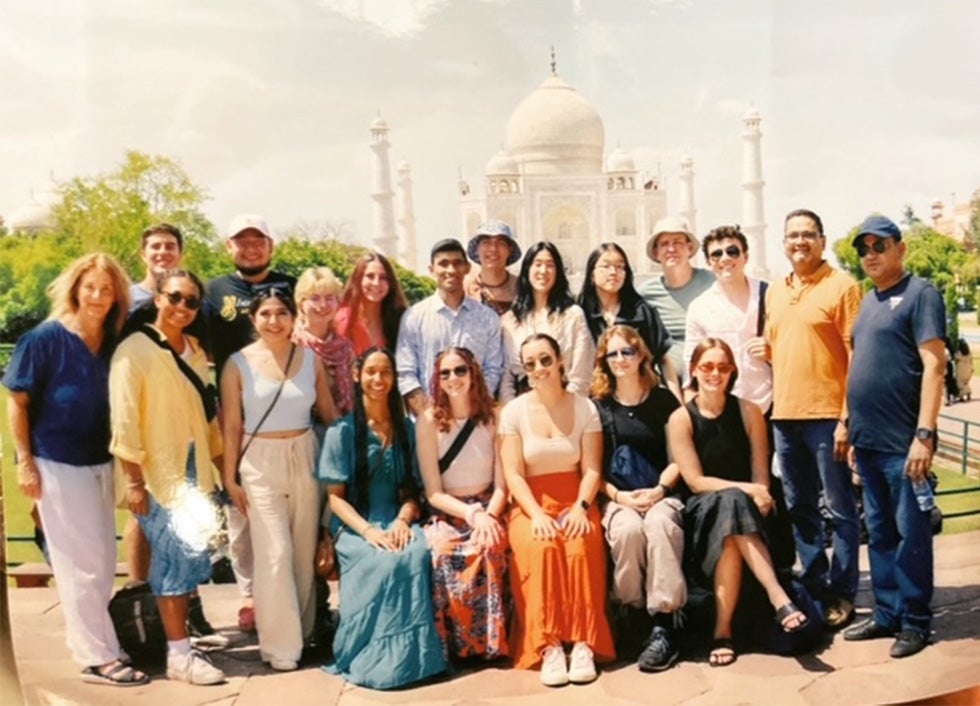
Death on the Ganges: Students explore how death and religion intertwine in India
From the banks of the Ganges River in Varanasi, India, billowing smoke clouds signal the end of life. Great fire pits, fed each day by thousands of pounds of wood, burn the bodies of the dead brought here by grieving family members.

The resultant ash is tossed into the waters of the Ganges, a process that Hindus believe allows a person’s soul to bypass the reincarnation process and proceed instead directly to heaven.
On a sweltering afternoon in May, a group of USC students, brought to Varanasi by Diana Blaine as part of her class “Death and Gender in Urban Environments: India” (SWMS 227), observed this cremation in person.
It was an eye-opening experience for the group, who spent three weeks in India learning how practices around death help to shape religious, cultural and national identities.
The course was one of the Maymesters offered by the USC Dornsife College of Letters, Arts and Sciences, in which faculty lead undergraduates on educational excursions. They’re aimed at giving students heads-on learning opportunities that can’t be found in the classroom.
“You can read about all this stuff until you’re blue in the face, but there’s nothing like being there and watching,” says Blaine, professor (teaching) of gender and sexuality studies.
Studying death
Most Americans are somewhat reserved about the topic of death, but not Blaine. She finds it fascinating. “Death is the ultimate meaning of life,” she says.
Her interest in the subject began when she was a PhD student in English at UCLA, where her doctoral dissertation examined the representations of dead women in American novels. At USC Dornsife, she’s taught a variety of classes on death and regularly leads a version of SWMS 227 in New York City.
Reading about the Varansi cremation pits, and discussions of the topic with Varun Soni, dean of religious life in USC’s Office of Religious and Spiritual Life, inspired her to create a sister Maymester to her NYC course.
Home to nearly 1.5 billion people, with devout Hindu, Muslim, Christian, Sikh, Buddhist and other religious groups practicing in close proximity, India was an excellent place to teach students about varying faith practices around death. A legacy of British colonization in the country would also let students examine how imperialism reshaped death traditions and left behind memorials.
The Maymester was originally booked for 2020, but it was skuttled by the COVID-19 pandemic. Blaine switched to a virtual Maymester that focused on the history of pandemics instead. She wasn’t sure she’d get a chance to try her India class again.
Then, nearly three years later, she got a call from the Office of Religious and Spiritual Life. A student was at the desk asking if this class would be offered again. It seemed like a sign to Blaine: “I felt like there was a calling, part academic, part intellectual and also an intuitive aspect, that this class needed to happen.” So, she set about organizing the trip for 2023.

Rethinking religion
In early May, Blaine and 16 students landed in Delhi to start their tour. Included in the group was Steven Kim, the student who’d asked about the Maymester, a fitting conclusion to his religion degree at USC Dornsife before heading to Harvard Divinity School.
Blaine and her students crisscrossed the country, taking in sites like the Taj Mahal, which, in addition to being one of the most recognizable tourist attractions in the world, is also a mausoleum. Students sat beneath the Bodhi Tree, under which the Buddha is said to have attained enlightenment, and some were able to hear the Dalai Lama speak during their visit to Dharamshala, the home of the Tibetan government-in-exile.
The trip prompted students to examine their own, personal relationship with death. “Students had the opportunity to ask themselves, and each other, what they believed and what they wanted to happen to their bodies when they die,” says Blaine.
For Rylee Kang, a junior majoring in human biology and minoring in health care studies and cinematic arts at USC Cinematic Arts, says the trip made her rethink religion entirely.
“This experience has opened my eyes to religion as a subject of study and exploration rather than just a practice,” she says. “It has also introduced me to the concept of incorporating beliefs from multiple religions, expanding the boundaries of my spiritual worldview.”

Death is just the beginning
The students said they found the trip emotionally challenging at times, but Blaine’s guidance and decades of experience processing such events helped steady them.
Despite the intense subject matter, and some rough travel conditions, the students excelled, says Blaine. “We had a bus break down, it was a hundred degrees everywhere, but they just rose to the challenge. They’d play games and sing, and they had such a bond with each other. I was charmed over and over again.”
Lessons from the trips will linger for Kang, helping her in her future medical career. “Knowledge of these subjects and different beliefs surrounding them will help me to empathize with others and be a comforting presence as a medical professional,” she says.
Next May, Blaine will take another cohort of students back to New York City for the Maymester. She’s considering other destinations for future SWMS 227 classes, too, such as Rome, where monuments to the dead are some of the city’s most popular attractions. Exact locations will depend a little on another nudge from the universe.
“I let places choose me rather than the other way around,” she says.